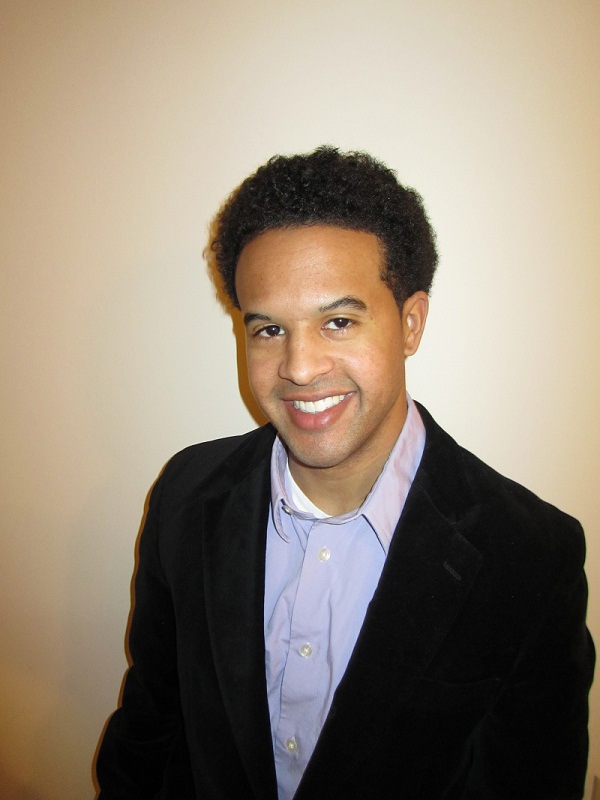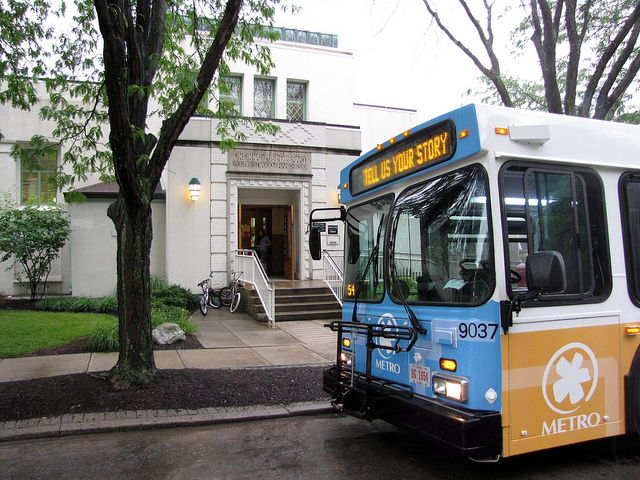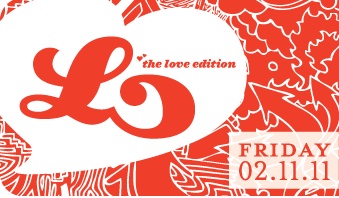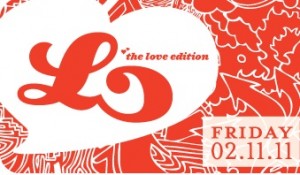 [February is Black History Month. Over the next few weeks UrbanCincy will share some stories of individuals from Cincinnati’s robust black community. The good, the bad and the ugly. This week, Alex Schutte shares his story about growing up half-black in the Queen City -Randy.]
[February is Black History Month. Over the next few weeks UrbanCincy will share some stories of individuals from Cincinnati’s robust black community. The good, the bad and the ugly. This week, Alex Schutte shares his story about growing up half-black in the Queen City -Randy.]
Cincinnati’s history has long been shaped by the ethnic makeup and cultures of its inhabitants. Some of the biggest contributors to Cincinnati’s history and culture have been African Americans and German Americans. I embody this history, quite literally, as I am half-black and half-white. My African American mother, oldest of ten, grew up in the projects of Cincinnati, while my father grew up in a German Catholic family in Finneytown.
Navigating the world as a biracial child can be tricky. While I grew up within a very loving family, sometimes it was difficult to figure out where I fit in to the traditional American racial dichotomy. I could never be white but I was never black enough. Most white people assumed I was 100 percent black until they saw my father. American society has always followed a “one drop” rule for classifying individuals as black if they had any ounce of African ancestry. On the other hand, many black people thought I must be mixed with something because I had that “good hair.” I eventually began to self identify as black, although I never denied my father’s blood.
Over the years I became more and more proud to be black, seeking out more information about black history and the story of blacks in America. It turned out that I was living in a city that has been highly influential in shaping the history of African Americans – a city whose history is intertwined with the lives of many African Americans who have struggled for equality and freedom.
Youth and School
In grade school we learned of Cincinnati’s role as a border town between a free state and a slave state. Our river town played a key role in The Underground Railroad, serving as headquarters to abolitionists, white and black, helping slaves escape across the Ohio River to freedom. I learned the names of important historical Cincinnatians such as Harriet Beecher Stowe, Levi Coffin, and John Rankin. Years later, the National Underground Railroad Freedom Center would be built along the banks of the Ohio River to recognize and celebrate Cincinnati’s vital role during this period of time.
Growing up within the Cincinnati Public School district allowed me to meet and befriend others from all walks of life. At a young age I began to see a pattern in the neighborhoods kids said they were from. Kids that were from Hyde Park, Anderson and Madiera were white and had money. Kids that were from Bond Hill, Avondale and Walnut Hills were black and had no money. I grew up in Kennedy Heights, so I was really middle-of-the-road. There was a sizeable black population, but I didn’t live in the middle of the hood either. I felt like I could tell my black friends I lived in Kennedy Heights, aka “K-Heights!”, and get their approval, but still be able to tell my white friends where I lived without them being scared to come over.
When it came time to choosing a high school, there was only one clear choice – Walnut Hills High School. This was by far the best traditional high school (I’m excluding School for Creative & Performing Arts on this one) at the time within the Cincinnati Public School District. I was either going there or my parents would pay to put me into Seven Hills or a similar school. Fortunately I passed the entrance exam and was accepted into Walnut; however several of my grade school friends did not pass. Instead of Walnut, my black friends went to Taft, Woodward, or Withrow. While my white friends’ parents paid to get them into private schools.
Even the mighty Walnut Hills was not safe from racial tension though. Looking out into the lunch room you still saw segregated social groups. Once I got into honors classes I became separated from several of my black friends from grade school. I observed shades of what I refer to as segregation, although I never saw any explicit racial conflicts or anything close to the law-mandated school segregation of decades earlier.
A History of Tension
I’m a mid 80’s baby, so I didn’t get to experience Over-the-Rhine’s Main Street in its heyday. However I can vividly remember my cousins on both sides telling tales of going out and having a blast on Main Street. Main Street used to be THE place to go out, no matter if you were white or black. There was a spot for everyone. And then there was the summer of 2001.
Timothy Thomas, an unarmed 19-year-old black man was shot and killed by a white police officer. At the time, Cincinnati had a largely white police force and had already experienced several clashes between police and the blacks in the community that year. The Timothy Thomas shooting was the proverbial straw that broke the black community’s back.
Over-the-Rhine and the center of Cincinnati erupted in riots, and a city-wide curfew was issued by then Mayor Charlie Luken. I was in high school when all of this was going on and I can remember how crazy I thought it was for an entire city to be under curfew. I mean my parents always had a curfew for me during the week, but now even they had a curfew! This was not Cincinnati’s first race riot. Cincinnati’s first was in 1829 when anti-abolitionists attacked blacks in the city. Riots occurred again in 1836, 1841 and later in 1968 after the assassination of Dr. Martin Luther King Jr. After 2001’s riot the city was in need of healing and dialog.
A Sober Hope for the Future
Our city is still recovering from the wounds of 2001 with some suburbanites still afraid to go all the way downtown. We are a city that never forgets and is slow to move on. We love clinging to the past whether that past is good or bad.
However, Cincinnati has come a long way since then despite all this. A new generation of Cincinnatians has embraced our city and its once forgotten central heart. This new generation has forgiven the city of its past and is willing to put the rest of this town on its back, dragging us toward our true potential. While I embrace the new development in our city center, and within its historic neighborhoods, I am sometimes torn as often times these new developments require the removal of lower income (mostly black) people.
In the second half of the 20th century, predominately white working-class families that had filled the urban core during the European immigration boom in the 19th century moved out to the suburbs. Blacks filled these older city neighborhoods. Putting myself in the shoes of these inner city inhabitants I’d say “Where the hell have you guys been? You moved out, I moved in, and now because you decide to all of a sudden care about this neighborhood again, you’re kicking me out and telling me I’m not good enough to live here?”
I hope the new generation of Cincinnatians will care about not only our city’s rich historical, cultural and architectural treasures, but also care about the people that have helped shape them and who have called them home over the years. Cincinnati can become the city that we want it to be but only if we all work together to improve the lives of everyone that calls our city home.
 Ohio Governor John Kasich (R) was quick to give away a $400 million federal investment in Ohio for high speed rail to California and Florida. And now it seems as if his opposition to transport extends beyond high speed rail and includes all forms of transit.
Ohio Governor John Kasich (R) was quick to give away a $400 million federal investment in Ohio for high speed rail to California and Florida. And now it seems as if his opposition to transport extends beyond high speed rail and includes all forms of transit.







